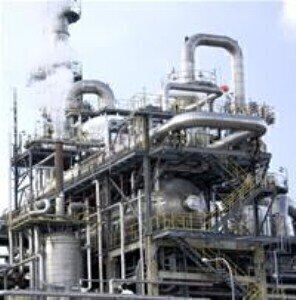Environmental Laboratory
Ifat China 2008: Tracking Down Pollutants
Oct 29 2007
Approximately 750,000 people die prematurely from air pollution in the large cities and the poor water quality in rural areas in China annually. The Financial Times reported this at the beginning of July with reference to investigations made by the World Bank.
Those in Beijing have realized in the meantime that an improvement of poor environmental conditions is closely linked to improved data and more precise monitoring. The current five-year plan stipulates setting up a network of measurement stations in all provinces all over the country. Regions with a high degree of pollution will be integrated into the system first. One of these is Zhejiang Province on the east coast south of Shanghai. Expanding the measurement stations was already started there in 2005. With currently about 1,000 measurement stations in the sewage sector and around 200 in the area of measuring emissions, Zhejiang is currently the province with the densest measurement network. "New stations are being set up here daily," Claus Schmidt reported, a consultant at the Environmental Science Research & Design Institute of Zhejiang. "And at least 300 additional measurement spots will be added in the coming year." Mr. Schmidt is convinced that the
other provinces will make similar investments in the next two to three years following the example of Zhejiang. In the sewage sector, the measurement systems mainly record the parameters TOC (total
carbon content), COD (chemical oxygen requirement that is needed for oxidizing organic and inorganic water contents), pH value and flow. In addition, the amounts of ammonium (NH4-N), phosphorous (TP) and nitrogen (TN) are determined when necessary.
The standard system measurement module for emission measurements checks for sulfur dioxide (SO2), nitric oxide (NOx), oxygen (O2), dust, temperature and pressure. The values for hydrogen chloride (HCI) and hydrogen fluoride (HF) can also be recorded as supplementary parameters.
Because there are many measurement equipment suppliers for the various areas, the environmental protection agencies in the Chinese provinces have created a list, on which the equipment is listed that may be used.
According to observations of Mr. Schmidt, the measurement points are usually installed directly adjacent to factories. The measured data are evaluated electronically and transmitted to the measurement offices. The companies have to pay for setting up the measurement stations
themselves, but receive a government subsidy. But these subsidies are only granted if the equipment is on the list of the environmental protection agency. "Unfortunately, the list has nothing to do with
performance," Mr. Schmidt complained. "Products and makes are currently included very arbitrarily. As a result, there are monopolies for one product or another in many areas. If you aren't on the list, you don't have much of a chance to participate in this very big market."
Mr. Schmidt believes that international companies, which offer measurement technology in the cited areas, have the best chance of participating in the Chinese market over the next one to two years. This is so especially in cases when it is a question of equipment that is "off the shelf". Companies are in demand that can provide know-how and instruments. Claus Schmidt: "Unsuitable standard equipment will have to be replaced by special equipment in China in the near future.
The reason is that many difficult to analyze chemicals are used in industrial production, so that waste water composition can usually not be determined using standard solutions."
Digital Edition
IET 34.2 March 2024
April 2024
Gas Detection - Biogas batch fermentation system for laboratory use with automatic gas analysis in real time Water/Wastewater - Upcycling sensors for sustainable nature management - Prist...
View all digital editions
Events
Apr 22 2024 Hannover, Germany
Apr 22 2024 Marrakech, Morroco
Apr 23 2024 Kuala Lumpur, Malaysia
Apr 23 2024 Kintex, South Korea
Apr 23 2024 Edmonton, AB, Canada


















